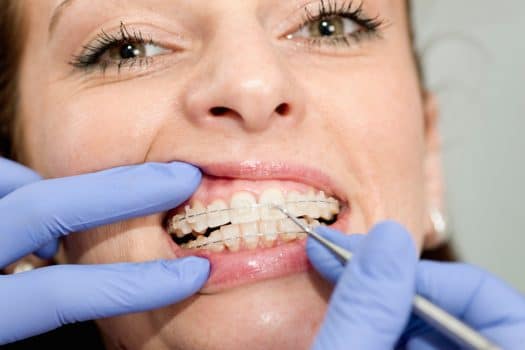Some Known Facts About All Star Family Orthodontics.
Table of Contents8 Easy Facts About All Star Family Orthodontics ShownThe Ultimate Guide To All Star Family OrthodonticsThe Facts About All Star Family Orthodontics RevealedThe Ultimate Guide To All Star Family OrthodonticsAll Star Family Orthodontics Fundamentals Explained

In enhancement, we offer adjustable therapy schedules, flexible repayment choices and a fun, pleasurable experience.
An orthodontist is a dentist educated to identify, protect against, and deal with teeth and jaw irregularities. Orthodontists function with individuals of all ages, from children to grownups.
Malocclusion, or misaligned teeth, can bring about oral concerns, consisting of dental caries, gum tissue condition, and tough or painful chewing. Not every person is birthed with straight teeth. If you have a poor bite or big spaces in between your teeth, you might intend to speak with a dental expert focusing on orthodontic care.
The smart Trick of All Star Family Orthodontics That Nobody is Discussing
(Picture Credit Score: DigitalVision/Getty Images) Orthodontists utilize fixed and detachable dental tools, like braces, retainers, and bands, to transform the setting of teeth in your mouth. Orthodontic therapy is for oral abnormalities, including: Uneven teethBite troubles, like an overbite or an underbiteCrowded teeth or teeth that are too much apartJaw misalignmentThe goal of orthodontic treatment is to boost your bite.
While you may assume of orthodontists as primarily for kids or young adults who require braces, they can remedy oral troubles at any age. Orthodontists go to university, oral school, and orthodontic institution.
, however not all dental practitioners are orthodontists. They focus on two locations: Just how to properly and securely move teeth Exactly how to appropriately lead development in the teeth, jaw, and faceOnce an orthodontist has completed training, they have the choice to become board certified.
The Facts About All Star Family Orthodontics Uncovered
Imbalance, or malocclusion, is the most common factor individuals see an orthodontist. Malocclusion is typically treated with: Your orthodontist affixes metal, ceramic, or plastic square bonds to your teeth.
If you have just small malocclusion, you may have the ability to utilize clear dental braces, called aligners, rather than typical braces. Some individuals need a headwear to aid move teeth right into line with stress from outside the mouth. After braces or aligners, you'll require to put on a retainer. A retainer is a personalized device that keeps your teeth in area.

You might need to see an orthodontist if you have: Crowding or not adequate space for all of your teethOverbite, when your upper teeth come your bottom teethUnderbite, when your bottom teeth are as well far forwardSpacing or concerns with gapsCrossbite, which is when your upper teeth fit behind your bottom teeth when your mouth is closedOpen bite or an upright void between your front base and top teethMisplaced midline, when the center of your bottom and upper teeth don't align Correcting an oral malocclusion can: Make attacking, chewing, and speaking easierImprove the balance of our face and your overall appearanceEase discomfort from temporomandibular joint problemsSeparate your teeth and make them much easier to cleanse, aiding prevent dental cavity or tooth cavities It's usually a dentist who first notices misaligned teeth throughout a regular examination.
Indicators on All Star Family Orthodontics You Should Know
During your very first orthodontic assessment, you'll likely have: A dental examPhotos taken of your face and smileDental X-raysPanoramic (360 level) X-rays of your face and headImpressions to create mold and mildews of your teethThese tests will aid your orthodontist understand just how to wage your therapy. An orthodontist is a dental professional that's had training to treat your teeth and jaw.
Orthodontists are dental professionals but not all dental experts are orthodontists. Orthodontists are concentrated on your bite, or the means your teeth fit with each other, and the straightness of your teeth.

This first appointment includes a visual exam of your teeth and bite, X-rays, and possibly also 3D scans. By thoroughly examining these elements, the orthodontist can determine any kind of imbalances, crowding, spacing problems, or jaw disparities. Once a clear picture is established, the orthodontist will go over customized therapy alternatives. This conversation will certainly cover the sort of dental braces or aligners advised (conventional steel dental braces, clear aligners like Invisalign, and so on), the projected therapy duration, and any prospective difficulties or negative effects.
Things about All Star Family Orthodontics
, orthodontists have a diverse click this site toolkit at their disposal. These tried-and-true braces make use of a system of brackets bound to the teeth and connected by cords.
Clear aligners, like Invisalign, are a popular alternative for clients looking for a more very discreet treatment choice. These removable trays are tailor-made to considerably shift the teeth's placement. Headwear may be utilized combined with dental braces or aligners to apply extra targeted pressures, specifically for fixing jaw disparities. In cases of slim jaws, palatal expanders can be used to produce area for appropriate tooth placement.